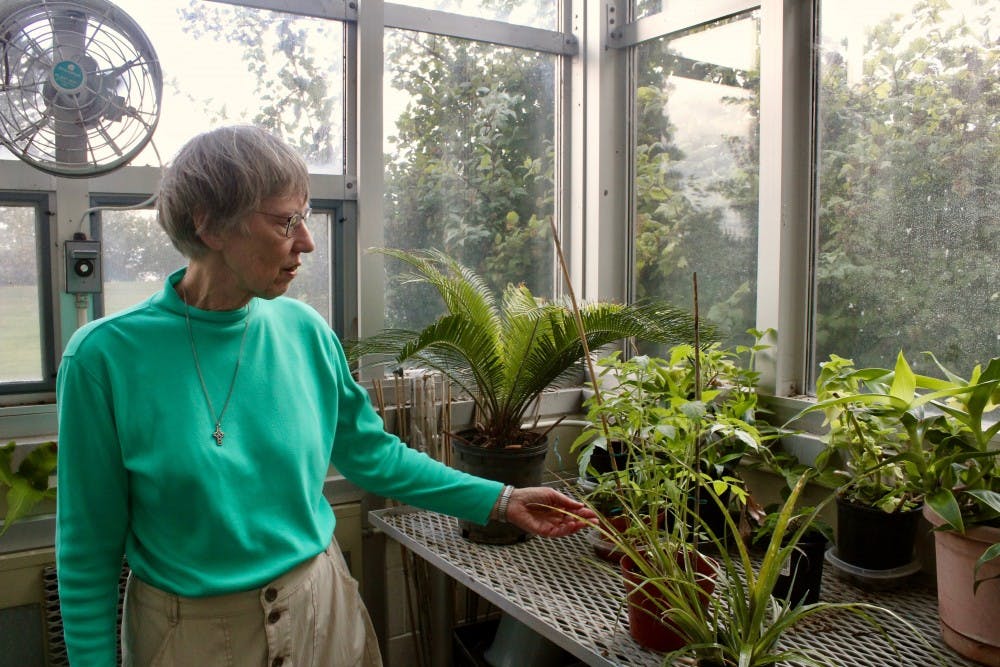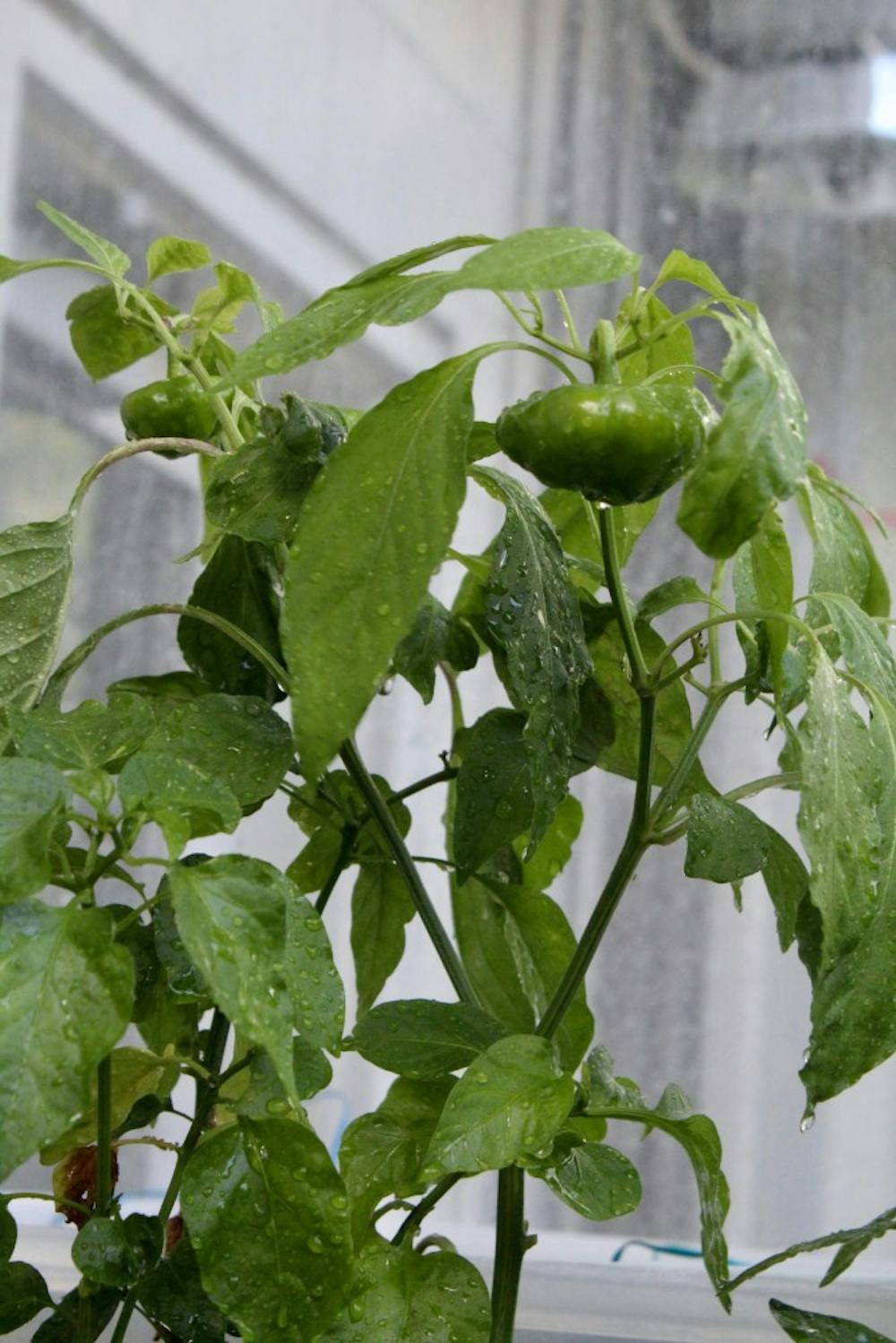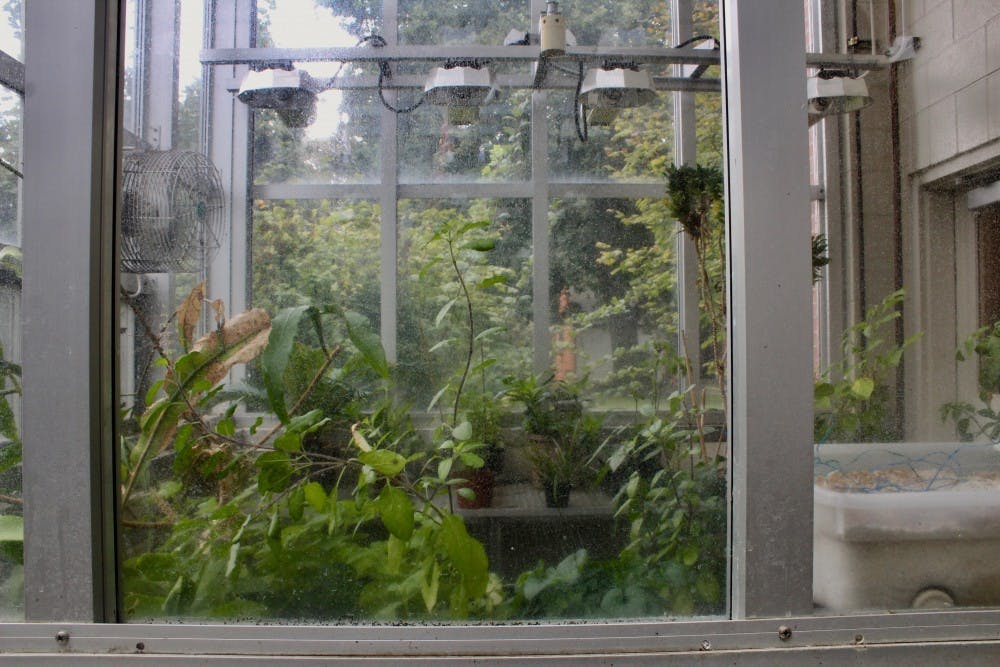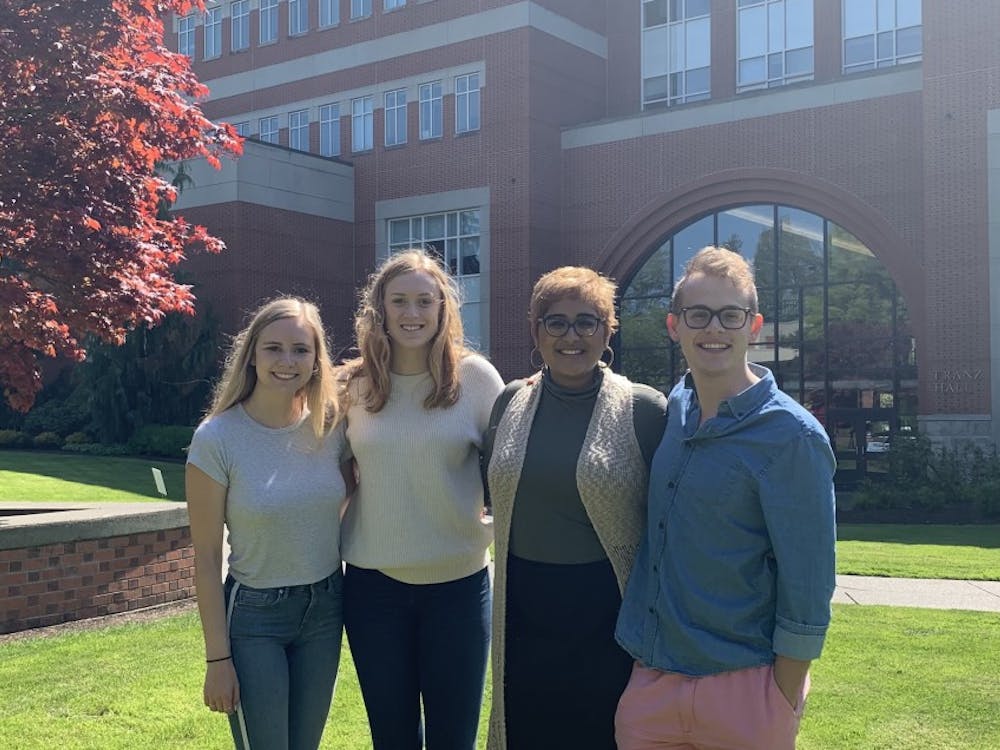Since Swindells Hall’s debut in 1999, UP students have gawked from a distance at the foggy windows of its greenhouse, wondering about the mysterious greenery inside. Many people don’t even know it exists.
Tucked away down the recycling hallway, the greenhouse has remained a hidden gem on campus, but the plants it holds are the subjects of new research whose impact extends far beyond The Bluff.
Research by faculty and students in the biology and chemistry departments has been revolutionized by the greenhouse’s presence. Prior to Swindells' construction, most plant research was scattered, occurring in off-campus facilities or non-regulated environments, such as the back porch of the old chemistry annex or professor’s offices.

Biology professor Laurie Dizney, and her research students grow and harvest milkweed in two bays of the Swindells greenhouse. They performed research that explored whether milkweed could grow in the Portland area in order to support monarch butterflies in their migration.
Greenhouses allow for a controlled environment that operates year-round, creating an ideal climate to optimize plant growth for research. The artificial light of the greenhouses plays a key role in maintaining the environment. Plants exposed to light — artificial or natural — for a longer period of time generally grow healthier, stronger and produce a higher yield. Researchers can also control a plant’s water intake, being careful not to over or under water the plants.
Laurie Dizney, assistant professor of biology, has two greenhouse bays full of a motley of milkweed ranging from vibrant, flourishing green to a tangled, wilted brown. She and several research students are pioneering research on Western Monarchs, butterflies that were once found abundantly in the Pacific Northwest and California. Information about this species is relatively unknown, except that they are in peril, as their population has declined by 98% over the past two decades.
Based on climate models, the Willamette River Valley is predicted to be the ideal environment for the Western Monarch to thrive, but there is little milkweed here for them to feed on, according to Dizney. Milkweed, which grew abundantly in the Pacific Northwest’s meadows and along its rivers, has been decimated due to agriculture and freeway construction, according to Dizney. The Western Monarch has directly suffered from this change in the environment because milkweed is their main food source.

Dizney's bays contain a multitude of milkweed plants in different conditions.
Dizney is working to prevent an environmental and cultural catastrophe. The direct relationship Western Monarchs have with their other pollinators and their predators may have grim consequences since the massive decline in Monarchs likely signals a large future decline in their predators as their food source disappears, according to Dizney. Other pollinators, such as bees, beetles and other butterflies, also depend on the same food sources and environmental conditions as Western Monarchs, so a drop in their populations is likely.
These butterflies are migratory, so the impact of their decline will be felt in a multitude of ecosystems down the West Coast and into Mexico because of the butterflies’ key role as a pollinator. As Monarchs migrate down to Mexico, they feed on the nectar of plants, pollinating wildflowers along their journey.
Their migration to Mexico is also vital to Mexican culture, as the Monarchs symbolize the return of loved one’s spirits during Día de Los Muertos, though fewer monarchs are making it to Mexico every year.
Though there has been little research on milkweed in the Willamette River Valley, Dizney aims to be the forerunner.
“My long term goal is to create a breeding and feeding corridor along the Willamette River from Eugene to Portland and do it before it’s too late since two percent (of the current Western Monarch population) is pretty dire,” Dizney said.
This month, Dizney and her research students are harvesting the milkweed plants from the greenhouse and their plot on Franz Campus to discover the proper treatment for their ideal growth.
Brianne Nem, a senior biology major who researched with Dizney, noted how her time in the greenhouse has expanded her skills.
“I’m a pre-dentistry student, so plants aren’t exactly my thing, but working in the greenhouse has taught me that things don’t always go as planned and has helped me become more flexible and a problem solver,” Nem said. “Doing work in an environment not related to health science has helped me become a better scientist overall.”
Dizney’s research is still in its infancy, but she is pursuing a grant from the National Science Foundation in the fall to secure funding for widespread milkweed research and planting in Oregon. She aims to put UP on the map for spearheading revival efforts for this endangered species.

Chemistry professor Angela Hoffman shows off the plants she has thriving in her greenhouse bay. Among the plants she has growing are Vietnamese medicinal plants, peppers and tomatoes.
But milkweed is not the only plant growing in the Swindells' greenhouse. Sister Angela Hoffman, professor of chemistry, has a mosaic of plants thriving in bay three of the greenhouse.
For the past 20 years, she has used the space for professional and personal purposes. She’s cultivated tobacco plants for her research and even vegetables for herself. Occasionally, she adopts professors’ unwanted desk plants and gives them a new home, some of them growing there as long as 20 years.
She works alongside students on groundbreaking research on paclitaxel, a molecule found in yew trees that is used to treat ovarian cancer, breast cancer, lung cancer, Karposi’s sarcoma and other conditions.
She extracts and purifies samples taken from her Yew Garden, found on the Franz Campus, and plants in the Swindells' greenhouse, in pursuit of a natural cure for cancer. She also experiments with Vietnamese medicinal plants and their cancer-fighting properties.

Chemistry professor Angela Hoffman's pepper plant shows first signs of a new pepper.
Amongst her medley of potentially life-saving research plants, Hoffman says her favorites in bay three are her vegetables, which she cooks with.
“I was at an archeological site in Pollentia, Spain this past summer and I found some tomatoes there I really liked, so I just took the seeds home with me,” Hoffman said. “I like to collect different plants and see if I can grow them myself.”
Dizney and Hoffman are excited about student interest in the greenhouse and encourage curious students reach out to look at the space. Dizney also hopes her research will grow enough for environmental and gardening clubs to get involved with saving the monarchs and planting milkweed.
“We want students to share our excitement about what’s going on in here,” Dizney said. “They have the opportunity to see history being made on The Bluff, so why not take it?”
Catherine Cieminski is a reporter for The Beacon. She can be reached at cieminsk22@up.edu.








